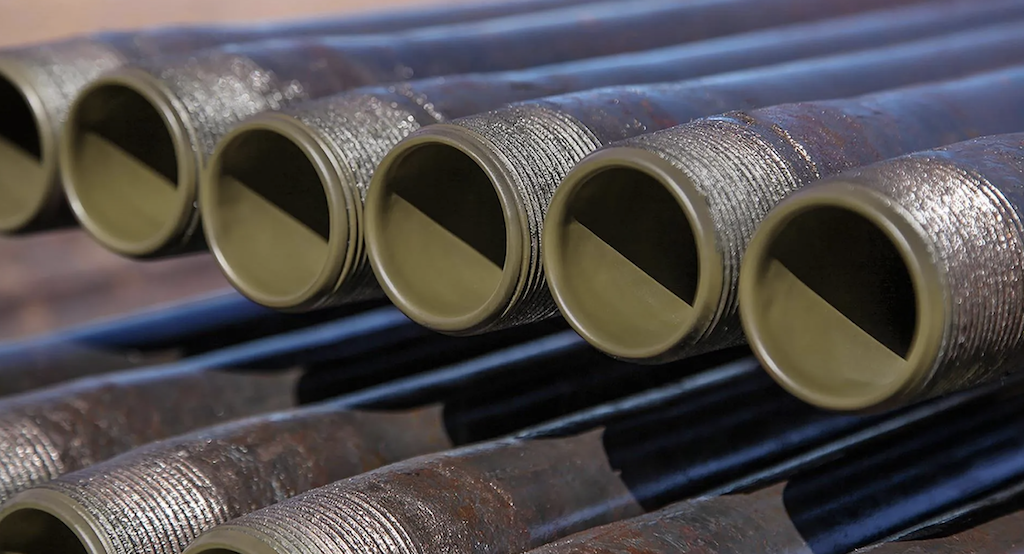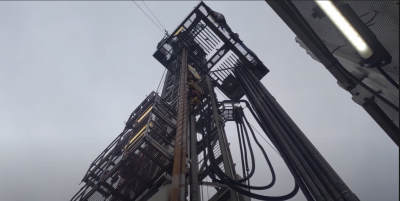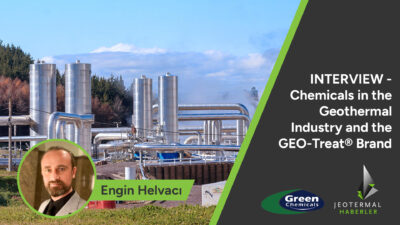Coating technologies extend geothermal plant operation – without chemicals
Taking lessons learned from the oil and gas industry, geothermal operators are applying internal coatings to mitigate corrosion and scaling.
As interest in geothermal energy for electric power increases, the lessons learned in the oil and gas industry become more important and relevant. Geothermal and oil and gas production are similar in many ways. Both require drilling in harsh environments, protecting existing ground water, efficiently moving liquid through an extensive network of tubing and piping, and handling massive amounts of produced water.
For decades, oil and gas production operations have been plagued with two major water-related issues: corrosion and scaling. Reservoir waters typically include high concentrations of dissolved minerals and sparingly soluble salts. As reservoir fluids are pumped from the ground, changes in temperature, pressure and chemical composition shift the solution equilibria of the dissolved species, causing them to precipitate and deposit as scale. Scaling occurs at all stages of hydrocarbon production (up-, mid-, and downstream). If left unchecked, scale builds up to cause blockages of wellbore perforations, casing, pipelines, pumps, valves, and other equipment.
Because they process similar reservoir waters, geothermal operations face many of the same scaling risks. Geothermal power plant production is usually accompanied by corrosion damage and scale formation in pipelines and power equipment, leading to significant reductions in system reliability and efficiency. [1]
A novel approach to optimizing geothermal plant performance
Methods to control and prevent corrosion and scaling in industrial applications have evolved over the past 50 years.[2] Empirical approaches and “after the fact” treatments (including chemical and/or mechanical removal of scales and replacement of heavily scaled/corroded sections) are being replaced. Systematic research aims to understand the complicated phenomena causing these problems and identify measures to prevent them. The knowledge acquired from other sectors, most notably oil production, contributes significantly to mitigation practices in geothermal.
For over 70 years, internal coatings have played an important role in maintaining flow in hydrocarbon production systems. NOV Tuboscope’s Tube-Kote internal plastic coatings (IPCs) have a proven record of reducing or eliminating deposit and scale buildup in many oilfield environments. By utilizing the appropriate IPC for the application, operators are assured a coating that provides a smooth surface, low surface energy, corrosion protection, and improved flow characteristics for longer asset life.
A proven solution in extreme production environments
Tube-Kote IPCs have extended the operating life of many high-temperature, corrosive oil production fields. A producing oil well in Canada provided a unique opportunity to evaluate the effectiveness of IPCs compared to bare steel. Due to lack of inventory, the operator designed the lower section of the well with 884 m (2,900 ft) of IPC-coated tubing and the top 1,882 m (6,175 ft) with bare L-80 tubing.
The tubing string exhibited a loss in pressure after one year in service, which was attributed to a hole in a joint of uncoated tubing. As a result, the entire tubing string was pulled and inspected. The uncoated tubing contained a layer of oil and solids deposits, while the IPC tubing was nearly deposit free (Figure 1).
Inspection of the pipe wall, which was carried out in accordance with a color-coding system designed by the American Petroleum Institute (API) known as API Spec 5CT, categorized the uncoated tubing as 46% blue, green, and red band. This indicated that the remaining wall thickness of the uncoated tubing was between 70% to less than 50% of the original, nominal wall thickness. The remaining uncoated tubing was designated yellow band, meaning that the remaining wall thickness was 85%. The hole was found in the third joint of tubing above the internally coated section of the string.
All joints of internally coated tubing were inspected to API standards and categorized as yellow band with at least 85% remaining wall . As a result, the original coated tubing was run back downhole along with an additional 1,882 m (6,175 ft) of coated tubing. The use of IPCs through the entire length of downhole tubing extended the asset life by over a year without the need for further intervention.
Figure 1 – Inspection of the tubing pulled from the Canadian well showed inorganic and organic solids deposits on the uncoated pipe, while the IPC-coated pipe was largely deposit free.
Uncoated L-80
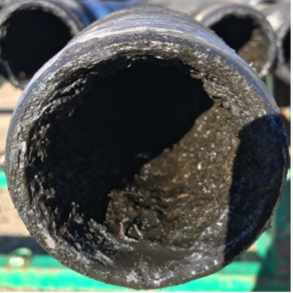
TK-15XT Coated L-80
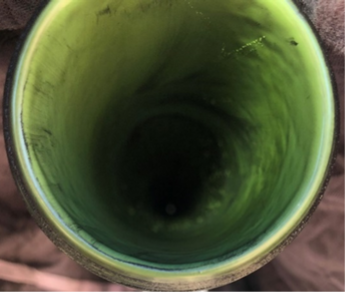
Results such as this are common in other oilfield operations using IPCs—and geothermal operators are taking notice. NOV is currently working with several operators in the US to investigate ways to extend the operating life and production performance of their geothermal plants with IPC.
For more information on NOV’s IPC solutions, visit https://www.nov.com/products/internal-tk-coatings.
[1] G.V. Tomarov, D.V. Kolesnikov, V.N. Semenov, V.M. Podverbny, and A.A. Shipkov, “Prevention of corrosion and scaling in geothermal power plants equipment,” JSC “Geothem-EM”, Lefortovsky val. ul. 24, 111250 Russia.
[2] N. Andritsos, P. Ungemach, and P. Koutsoukos, “Scale formation in geothermal plants,” International Summer School on Direct Application of Geothermal Energy, under the auspice of Division of Earth Sciences, UNESCO, IGA. 2002. https://www.researchgate.net/publication/248390587_SCALE_FORMATION_IN_GEOTHERMAL_PLANTS
Source: NOV Tuboscope
